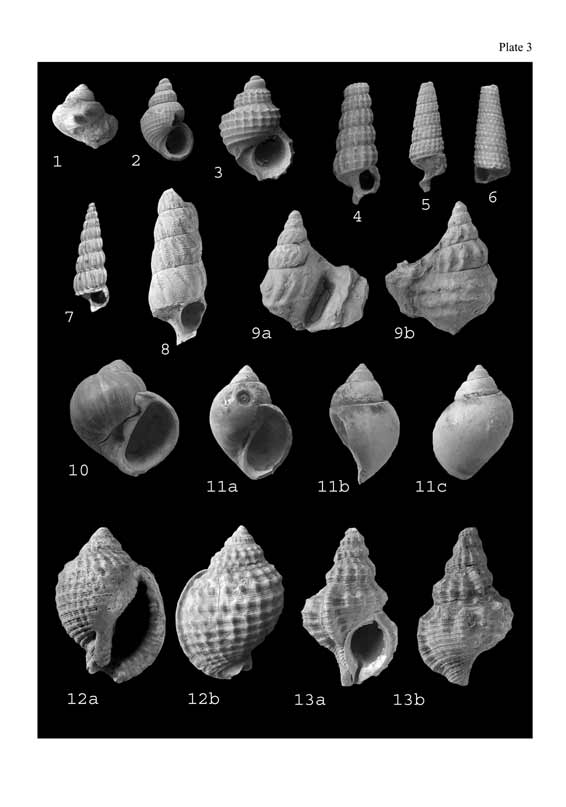
|

|
PALAEONTOS 15 (contains two papers)Price: non-members: 40 euros, members: 35 euros 1) Schnetler K.I. & Palm E., 2008, The molluscan fauna of the Late Oligocene Branden Clay, Denmark. ISSN: 1377-4654.(92 textpages, 11 textfigures, 1 table, 9 platesSummary: The molluscan fauna of the earliest Late Oligocene Branden Clay of Denmark contains 83 species from the classical localities at Branden and Fårup. Seven new species are established, viz. Liomesus brandensis n. sp., Aquilofusus mothsi n. sp., Aquilofusus birgitteae n. sp., Aquilofusus marqueti n. sp., Aphanitoma ingerae n. sp., Pseudocohlespira schwarzhansi n. sp. and Oenopota ronaldjansseni n. sp. Fourteen species are recorded from the Late Oligocene of Denmark for the first time. The genus Amaurellina is reported for the first time from the North Sea Basin. The genus Aphanitoma has not previously been recorded from the Danish Late Oligocene and the genus Oenopota was, until now, known only from Miocene to Recent. Lectotypes for Liomesus danicus (von Koenen, 1886) and Aquilofusus rosenbergi (Ravn, 1907) are designated. The palaeoenvironment of the Branden Clay is interpreted as deeper sublittoral; the water depth is estimated to have been about 100 m. Comparisons with other Oligocene mollusc faunas confirm that the Branden Clay is of Late Oligocene age, in agreement with previous age determinations, based on foraminifers and coccoliths. 2) Schwarzhans W., 2008, Otoliths from the Late Oligocene Branden Clay, Denmark.(8 textpages, 1 plate)Summary: A small collection of 34 large specimens of fish otoliths from the Late Oligocene Branden Clay of Denmark has yielded 4 species. Two species represent the gadiform genus Raniceps and help to better define the nature of the three Oligocene species of the genus, which have often been confused or synonymized in the past. The two other species represent ophidiiforms including the new species - Otarionichthys brandenensis n.sp. The four species and their large size support the concept of the Branden Clay representing a deep, open marine environment. |
|
ORDER INFORMATION:please contact us at: palaeontos@gmail.com |
|